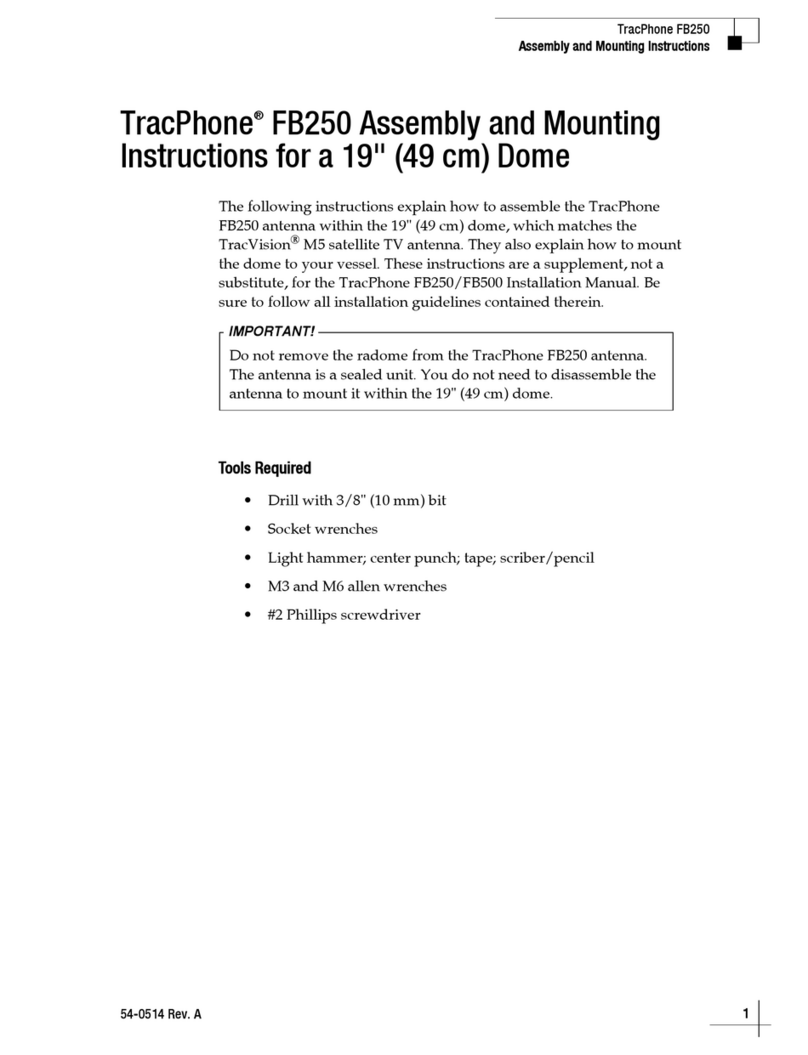
TracPhone V3 Installation Guide
1
KVH’s Compact mini-VSAT Broadbandsm System
KVH, TracPhone, and the unique light-colored dome with dark contrasting baseplate are registered trademarks of KVH Industries, Inc.
mini-VSAT Broadband is a service mark of KVH Industries, Inc. All other trademarks are property of their respective companies.
The information in this document is subject to change without notice. No company shall be liable for errors contained herein.
© 2011 KVH Industries, Inc., All rights reserved. 54-0747 Rev. B
These instructions explain how to install the TracPhone V3 mini-VSAT Broadband satellite
communications system. Instructions on how to use the system are provided in the User’s Guide.
Installation Steps
CAUTION - RF Radiation Hazard
Who Should Install the System?
To ensure a safe and effective installation, only a KVH-certified technician should install the
TracPhone system. To find a technician near you, visit www.kvh.com/wheretogetservice.
Technical Support
1. Inspect Parts and Get Tools ................. 3
2. Plan the Antenna Installation.............. 4
3. Plan the Belowdecks Installation ........ 5
4. Prepare the Belowdecks Units............. 6
5. Prepare the Antenna Site...................... 9
6. Remove the Shipping Restraints....... 10
7. Prepare the RF Cables......................... 11
8. Wire the Antenna ................................ 12
9. Mount the Antenna............................. 14
10. Wire the Belowdecks Units.................15
11. Connect Power......................................17
12. Configure the Computer(s).................18
13. Turn On the System .............................21
14. Update the System Software...............22
15. Set Up RF Hazard Zones.....................23
16. Test the System.....................................24
17. Educate the Customer..........................25
The antenna transmits radio frequency (RF)
energy that is potentially harmful.
Whenever the system is powered on, make
sure everyone stays more than 32 ft (10 m)
away from the antenna within its 7.5-75°
elevation range. No hazard exists directly
above the antenna and anywhere below the
antenna’s mounting plane.
North/South America, Australia:
Phone: 1 866 701-7103 (U.S. only)
Phone: +1 401 851-3806
Europe, Middle East, Asia, Africa:
Phone: +45 45 160 180
Radiation
Hazard
3
2
ft (10
m)
7.5°
Radiation
Hazard
32
ft
(
10
m)
75°75°
7.5° Antenna




























